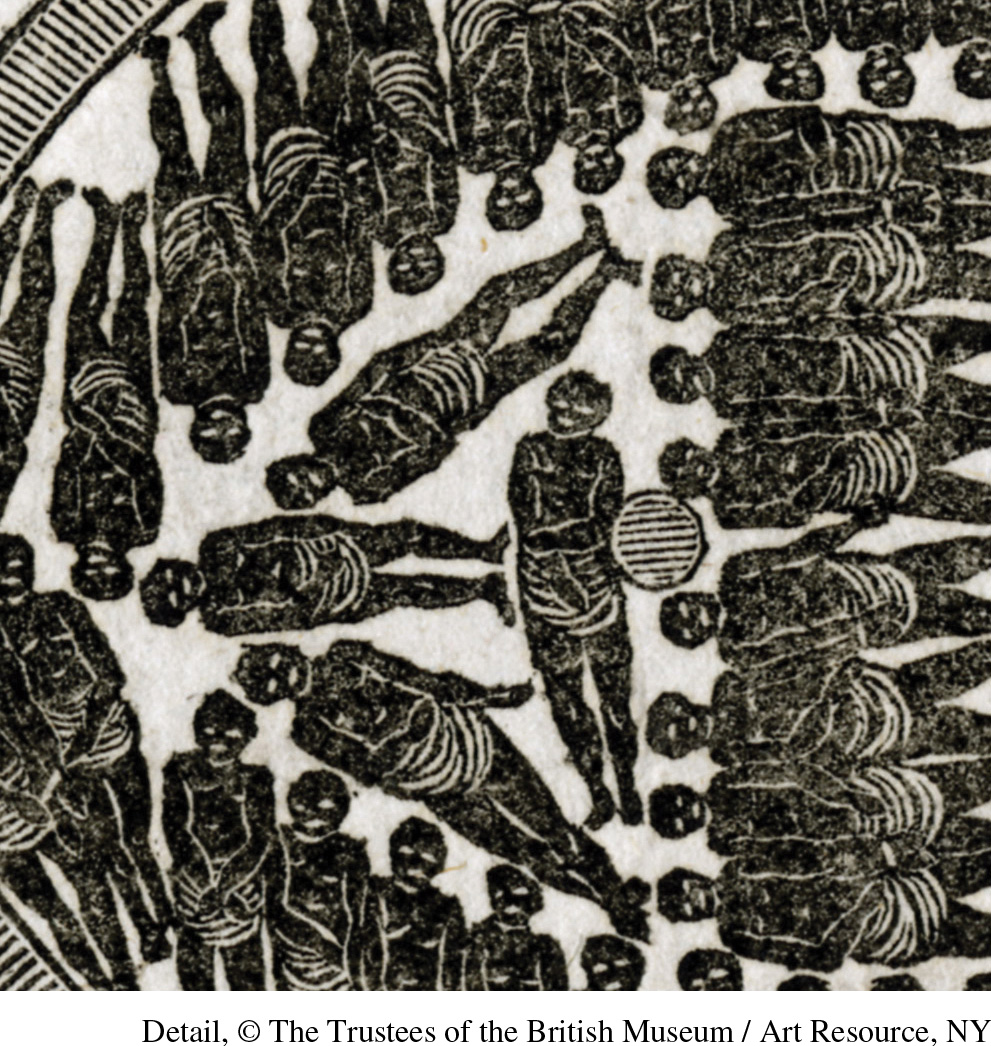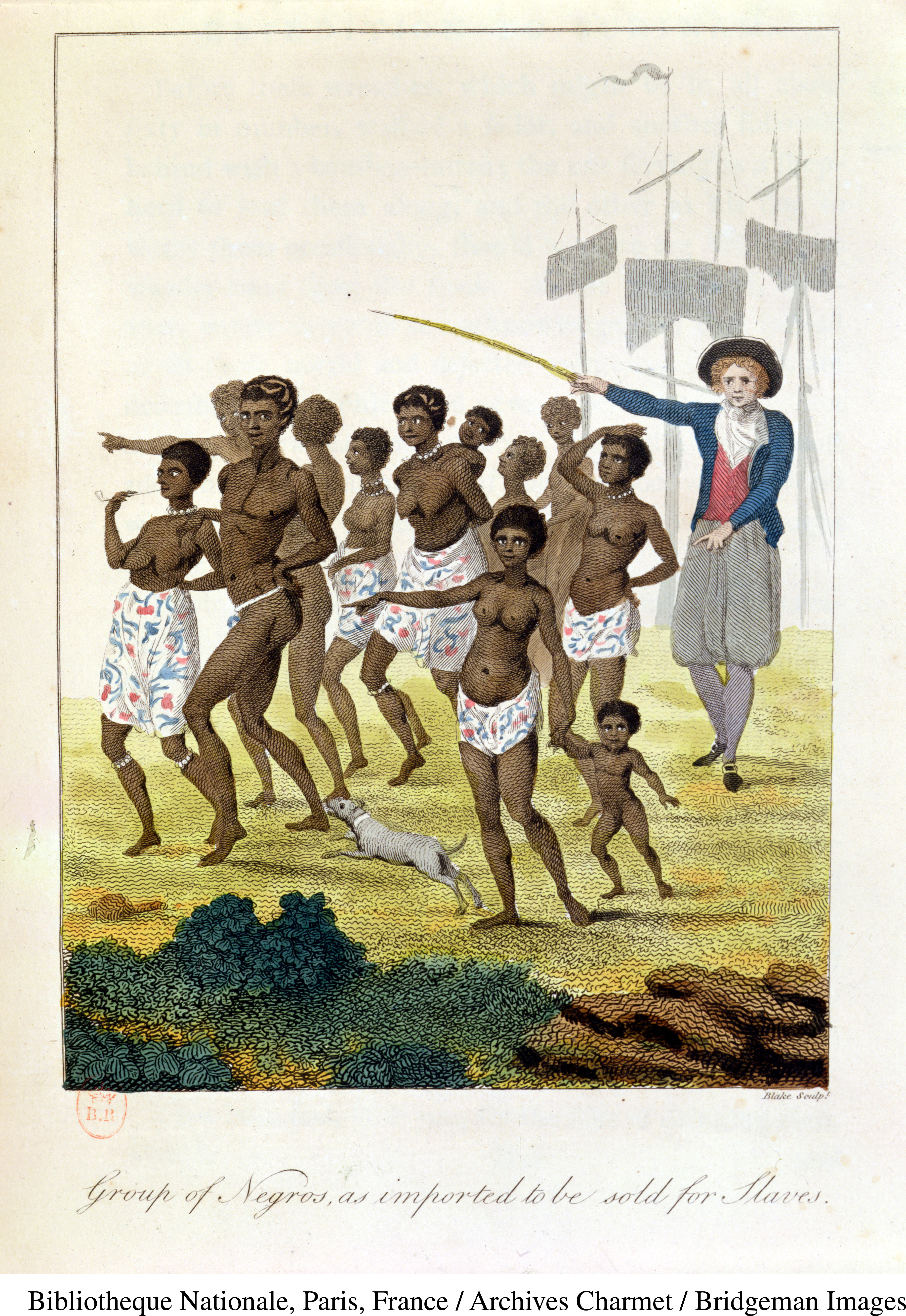Seeing History: The “Invisibility” of Slavery
Printed Page 573
Important Events

As slavery expanded in North and South America and the Caribbean Islands in the eighteenth century, more and more people in Europe became involved in some aspect of the slave trade and millions more found their lives profoundly altered by plantation products such as sugar, coffee, and cotton. Nevertheless, before the end of the eighteenth century Europeans paid surprisingly little attention to slavery as a practice. Paintings and prints depicting slave life usually minimized the violence visited on the slaves. More realistic representations only emerged in the late 1700s as part of the emerging campaign for the abolition of the slave trade.
The top image is a wood engraving from 1789 that shows a cross section of an English slave ship built in Liverpool in 1780–1781 for the merchant Joseph Brooks. In 1782, the ship carried 609 enslaved Africans across the Atlantic in a space designed for 451 people; 351 of them were men, 127 women, 90 boys, and 41 girls. Abolitionists showed members of Parliament a model of this ship to convince them of the brutality of the slave trade.
The bottom image is an etching and engraving by the British artist William Blake of a plate that was published in John Gabriel Stedman’s Narrative, of a Five Years' Expedition, against the Revolted Negroes of Surinam (1796). Although the events in the narrative took place in the 1770s, Stedman only found a publisher for his account in 1791, and then several years passed while the manuscript was edited and engravings prepared based on his preliminary drawings. Once published in 1796 Stedman’s Narrative quickly became a beacon of the abolitionist cause because it described the cruelties inflicted on slaves in great detail. Yet even in this rendition by Blake the violence inherent in the slave trade is somewhat muted.
Questions to Consider
- Why did images of the brutality of the slave trade emerge only toward the end of the 1700s?
- Why were images such as these important tools for those who argued for abolishing the slave trade?